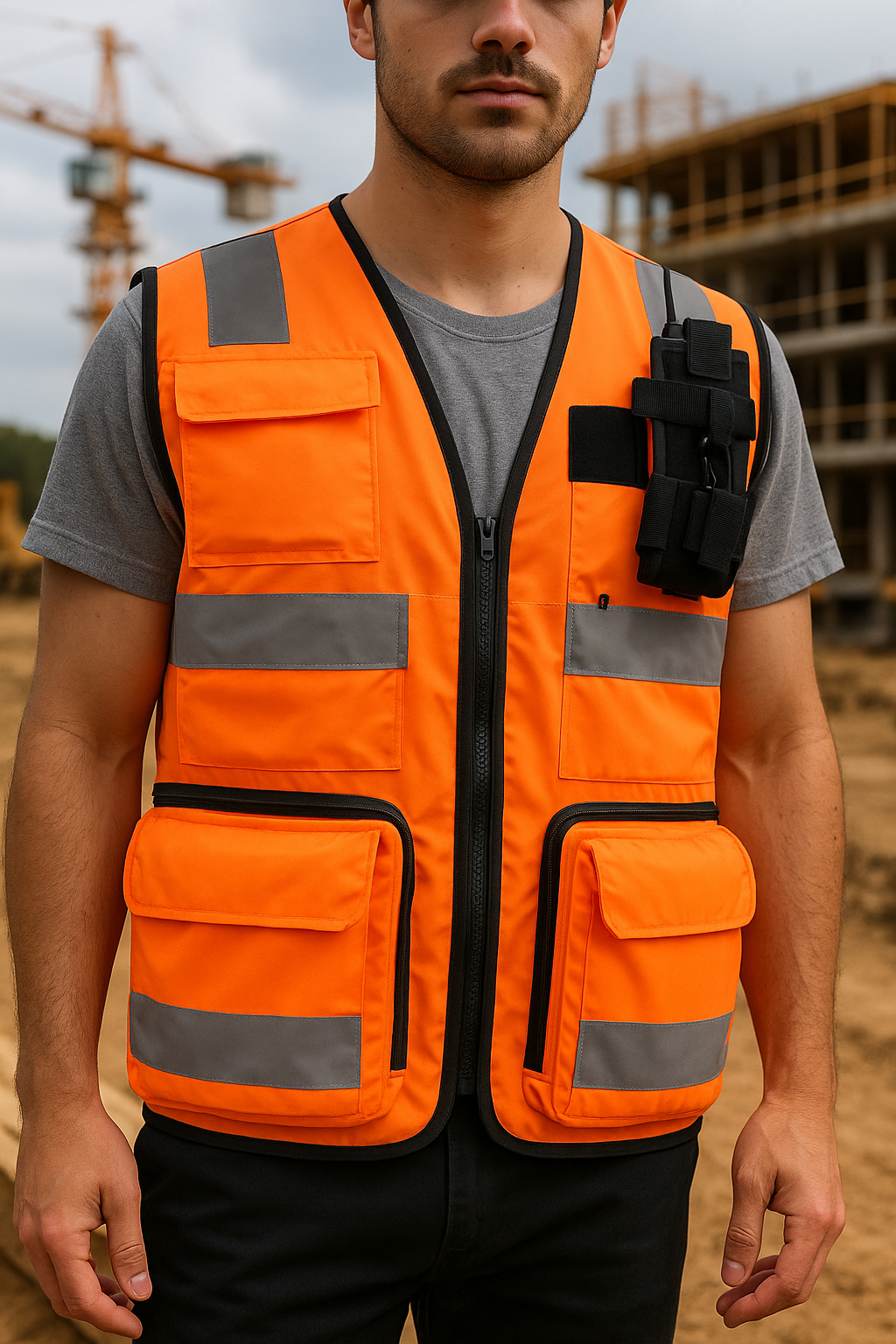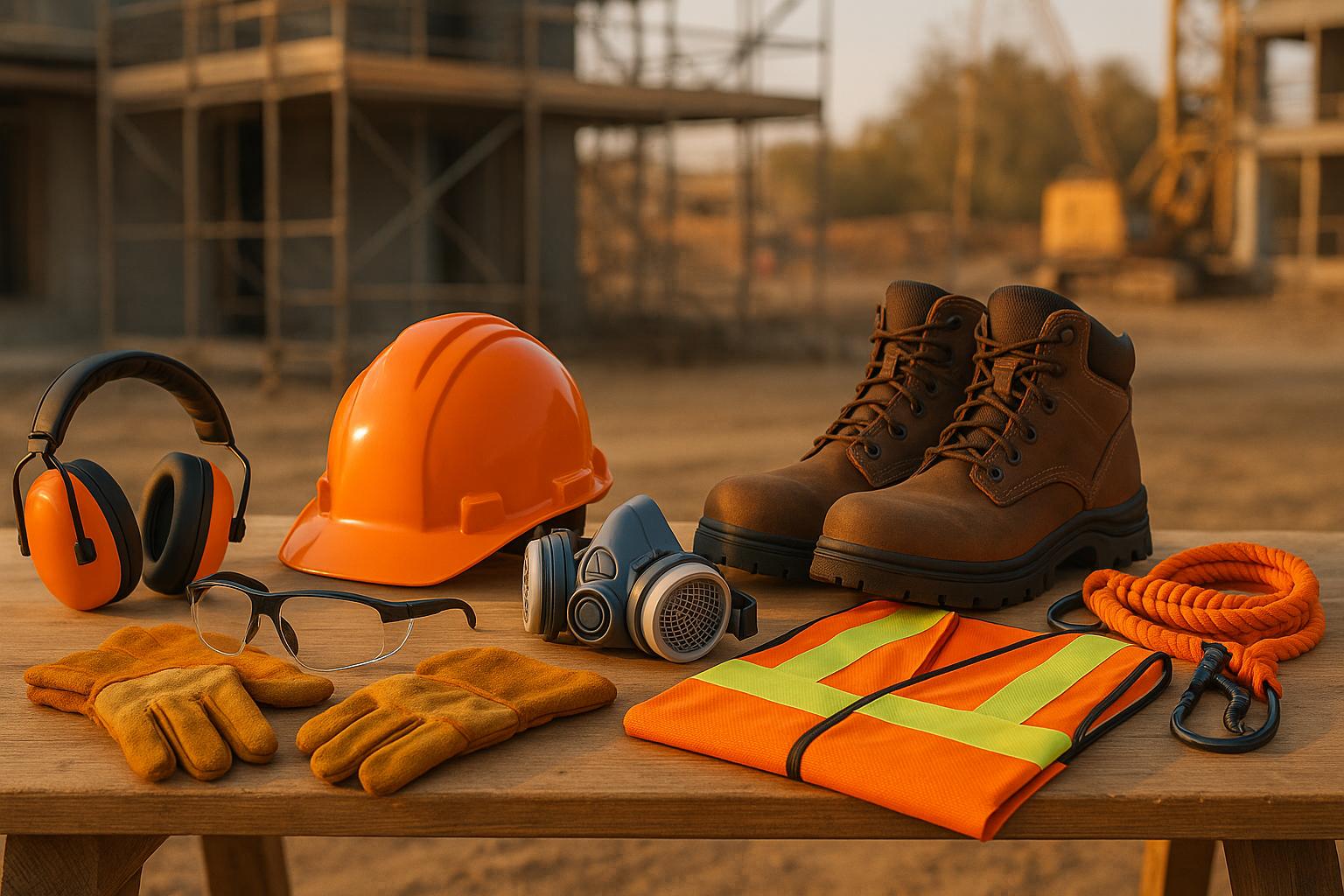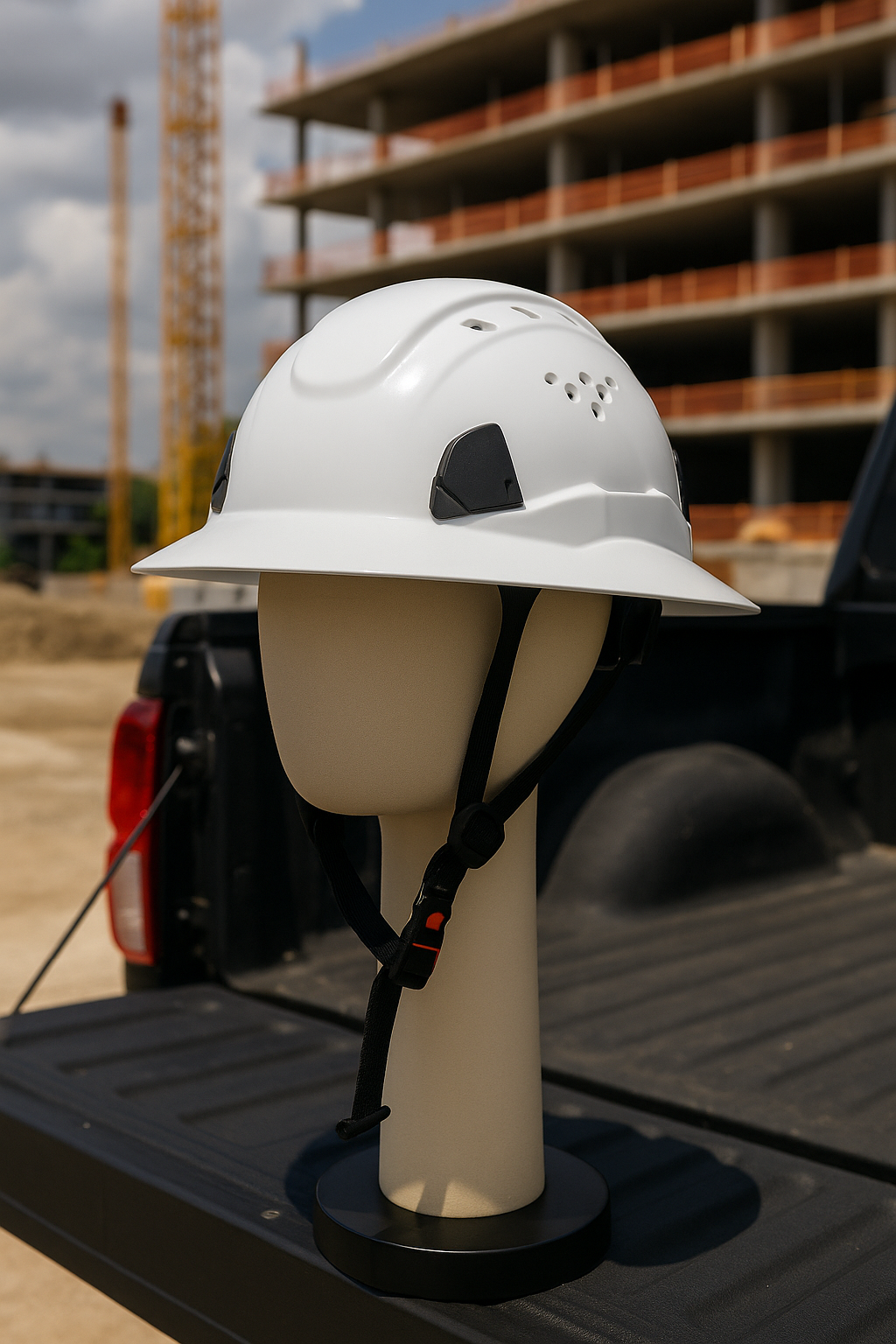The Ultimate PPE Guide for Contractors: Hard Hats, Safety Vests & More
The Ultimate PPE Guide for Contractors: Hard Hats, Safety Vests & Essential Jobsite Gear
In the construction world, risk is everywhere. Falls, head impacts, vehicle traffic, airborne particles, these are everyday hazards for contractors and crews. That’s why PPE (Personal Protective Equipment) is not optional, it’s your frontline defense. This comprehensive guide will walk you through selecting, maintaining, and enforcing PPE on job sites, with special focus on hard hats and safety vests.
You’ll learn:
-
What PPE is and when it’s required
-
How to choose and care for essential items
-
How to build a PPE program that sticks
-
FAQs (with schema for search engines)
Let’s get started.
1. Understanding PPE & Its Role on Job Sites
What is PPE?
PPE refers to protective gear worn to reduce exposure to hazards that cause injury or illness — things like falling objects, chemical splashes, loud noise, or sharp edges. OSHA+1
Regulatory context & OSHA requirements
-
OSHA requires that PPE be “of safe design and construction for the work to be performed.” OSHA
-
Employers must assess workplace hazards, select appropriate PPE, train workers in its use, and maintain the gear. OSHA
-
PPE is considered the last line of defense after engineering controls, administrative controls, or eliminating hazards (the “Hierarchy of Controls”).
In construction, failure to provide or enforce PPE can lead to fines, elevated risk, and injury claims.
2. Core PPE Every Contractor Should Keep On‑Hand
Here’s a breakdown of the essential PPE types contractors should have, with guidance on selection, use, and maintenance.
2.1 Head Protection: Hard Hats & Safety Helmets
When is head protection required?
Under OSHA Construction Standard 1926.100, workers must wear head protection when there is a risk of impact, falling/flying objects, or electrical hazards. OSHA+2OSHA+2
Hard hat / helmet standards
-
Must comply with ANSI/ISEA Z89.1 (or equivalent) editions (1997, 2003, 2009) OSHA+2OSHA+2
-
Two Types:
• Type I — protection from vertical impact
• Type II — protection from vertical and lateral impact OSHA+1 -
Three Classes (electrical protection):
• Class G (General) — tested at 2,200 volts OSHA+2Safety By Design+2
• Class E (Electrical) — tested to 20,000 volts OSHA+1
• Class C (Conductive) — no electrical protection resources.duralabel.com+1
Modern shift toward safety helmets
OSHA has signaled a movement away from traditional hard hats to more advanced safety helmets, which may offer better side protection, built-in chin straps, and integration with accessories (face shields, hearing protection, etc.). OSHA+3OSHA+3TAUC+3
Inspection, lifespan & replacement
-
Inspect daily for cracks, dents, damage, or wear
-
Some manufacturers recommend replacing helmets every 5 years, suspension systems yearly Safety By Design+2OSHA+2
-
Discard if exposed to chemicals, extreme heat, or significant impact
2.2 Eye & Face Protection
Use safety glasses, goggles, or face shields when there’s a risk of particles, splashes, sparks, or UV exposure. Ensure the gear meets ANSI Z87.1 standards.
2.3 Hearing Protection
Earplugs or earmuffs are required in noisy environments above permissible exposure limits (typically 85–90 dBA). Rotate workers and plan breaks to reduce cumulative exposure.
2.4 Respiratory Protection
Dust masks, half‑mask respirators, or full face units are used depending on airborne hazards (silica, fumes, chemicals). Fit testing and change schedules for filters are critical.
2.5 Hand Protection
Use gloves that protect against specific hazards: cut resistance, chemicals, thermal, puncture, etc. Fit and dexterity matter.
2.6 Foot & Leg Protection
Steel or composite toe boots, metatarsal guards, slip-resistant soles, shin guards. Select based on risk of impact, crushing, penetration, or slips.
2.7 High-Visibility Clothing / Safety Vests
Why it matters
When working near moving vehicles or machinery, visibility saves lives. Contractors often face busy equipment zones or public roadways. weeklysafety.com+2OSHA+2
Regulatory context
-
OSHA 1926.651(d) requires warning vests or similar garments when workers are exposed to public vehicular traffic. weeklysafety.com
-
For flaggers, the garment must be fluorescent (orange, yellow, strong yellow-green) and retroreflective at night. OSHA+1
-
Under the General Duty Clause, visibility PPE may be required in other traffic-exposed work zones. OSHA+1
Classes/types of vests (ANSI/ISEA 107)
-
Class 1 — basic, minimal visibility
-
Class 2 — for work near roads or moderate traffic
-
Class 3 — maximum visibility, often with sleeves and full body outline
Choose a vest that:
-
Uses fluorescent and reflective materials
-
Fits without restricting movement
-
Is kept clean and replaced when damaged or faded

3. Building & Enforcing a PPE Program
A top-tier PPE plan does more than supply gear — it embeds safety in the culture.
Hazard Assessment & Task-Based Specs
-
For each task or zone, list the hazards
-
Define a PPE matrix (task → required PPE)
-
Post signage & include PPE requirements in site plans
Training & Education
-
Explain why each piece is needed
-
Train in donning, doffing, inspection, care & limitations
-
Make training ongoing, not one-time
Enforcement & Accountability
-
Use regular inspections, audits, and corrective action
-
Incentivize compliance, discourage negligence
Maintenance, Storage & Replacement
-
Clean PPE regularly per manufacturer guidelines
-
Store in protected, dry, non‑contaminated areas
-
Replace when damaged, expired, or no longer effective
Review & Continuous Improvement
-
Gather incident reports, near misses, feedback
-
Adjust PPE specs over time
5. Common Mistakes & Myths to Avoid
-
Ill-fitting PPE — gear that’s too tight or too loose gets bypassed
-
Using dirty, faded, cracked PPE
-
Thinking PPE replaces safer design — it doesn’t
-
Underestimating visibility risks in low light
-
Neglecting training or refreshers
6. ROI & Risk Reduction: Why PPE Is Worth It
-
Costs of injury, downtime, medical claims, litigation exceed PPE investment
-
Insurance, legal exposure, OSHA fines can be mitigated
-
Demonstrating safety commitment builds trust with clients, unions, and crews
7. Contractor PPE Essentials Checklist
Print or distribute this to crews:
| Task / Zone | Required PPE | Notes |
|---|---|---|
| Overhead work | Hard hat (Type I/II, Class appropriate), safety glasses | Inspect daily |
| Roadside / near vehicles | Safety vest Class 2/3, hard hat | High visibility a must |
| Dust / silica exposure | Respirator, goggles | Fit‑test regularly |
| Noisy environment | Earplugs / earmuffs | Monitor dBA levels |
| Handling materials | Gloves, safety footwear | Use cut/high shock resistant gloves |
(Remember to link “Hard Hats” and “Safety Vests” in relevant checklist entries.)
8. FAQs
-
What PPE is mandatory for contractors?
Under OSHA, contractors must provide PPE where hazards exist — such as hard hats in overhead workzones, high-visibility vests near traffic, eye/face gear in cutting or chemical tasks, etc. -
How often should hard hats be inspected or replaced?
Inspect daily. Replace immediately if any cracks, damage, or discoloration. Many manufacturers recommend full replacement after about 5 years (or sooner if exposed to chemicals or impacts). -
When do you need a class III safety vest?
When workers are in high-traffic areas or when maximum visibility is needed (e.g. nighttime, poor lighting, complex surrounding). -
Can you reuse disposable respirators?
Typically only if they remain clean, undamaged, and not contaminated (per manufacturer guidance). For many hazard exposures, use fresh filters or respirator units per schedule. -
What if a worker refuses to wear PPE?
Enforce your safety policy. Provide education, discipline if needed, and document compliance. No tolerance for risking life.


